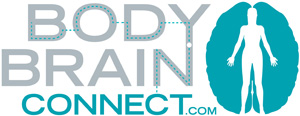Body awareness is the ability to pay attention to and maintain perception of your body. It is the capacity to feel your body in movement and in stillness. Focusing on the body requires you to pay attention. Perception allows you to feel your body. Body awareness is actively listening to your body and making intelligent changes.
Attention
Here’s how William James, the pioneering psychologist, described the qualities involved in paying attention.
“Everyone knows what attention is. It is the taking possession by the mind, in clear and vivid form, out of what seem several simultaneously possible objects or trains of thought. Focalization, concentration, or consciousness are of its essence. It implies withdrawal from some things in order to deal effectively with others.”
In order to pay attention to the body you must withdraw from such thoughts as, What should I buy for dinner tonight? How are my children doing? How is my body feeling at this moment?
Most adept movement educators will, at key moments in teaching, prompt students to turn their attention inwards towards their bodies by using cues: “Notice you breath,” “Feel your feet on the floor,” or “Align your pubic bone over the arch of your foot.”
Perception
The second major component of body awareness is perception. The body has an infinite number of opportunities to perceive. Such options include:
- Perceiving your heartbeat
- Being aware of the breath
- Feeling pain
- Noticing sweaty palms
- Knowing where your body is in space (proprioception)
When you practice body awareness, it is important to clarify your focus of attention. The brain organizes bodily perception into two categories: interoception and exteroception. Interoception reads the physiological condition within your body– pain, temperature, itch, sensual touch, hunger, thirst, how your muscles feel. Exteroception feels stimuli originating outside your body, including touch, sound, and changes in pressure or posture (mechanoreception), and knowing where your body is in space due to tiny sensors in your joints and muscles (proprioception).
Body awareness is important for movement educators for three reasons.
- Feeling your own body helps you explain proper movement patterns to your students.
- Feeling your body allows for more exploration and nuance.
- Feeling incorrect movement patterns helps you guide students to healthier movement patterns.
Ironically, some highly proficient dancers and athletes, even yogis and Pilates instructors, can execute movements with incredible precision while having very little body awareness. Ilya Vidrin, a student at Harvard Graduate School of Education provides insights into this phenomenon from his own experiences as a professional dancer, movement educator and researcher. Some people are highly talented and extremely coordinated and are thus able to create expert movements without explicit body awareness, Vidrin explains.
But, he asks in his current research, what are the overall mental and psychological ramifications of poor body awareness? Are talented movers reaching their full potential without explicit bodily awareness? Are they healthy and happy over the long haul without this awareness? Are they reaching the peak of their success, or are they losing out on something important?
It has also been his experience that teachers who cannot explicitly verbalize their movements and internal bodily states cannot break movements down effectively, or describe transitions as well as those who can. Thus, Vidrin is currently designing research that investigates the role between the mind/body connection, and how an instructors’ explicit bodily awareness plays a role in educating movement.
The late Ron Fletcher, one of Joseph Pilates’ first generation teachers, spoke about body awareness in an interview with Kyria Saben at his Texas ranch in late 2011, weeks before his death. Fletcher emphasizes the variability of body awareness, and the fact that each person has a different starting point.
One of the most important things to teach, he said, is “A sense of physicality – of body awareness. Most students – people in general – don’t go there. Each person has a different degree of physicality. I’ve noticed that teachers often times pass over the importance of teaching this – they let it go. There’s an obligation and a responsibility teachers have to explore and nurture a deeper sense of physicality – and to continue to explore it in their own bodies…”
Whether you teach dance, yoga, Pilates, physical therapy, Feldenkrais or other mind-body techniques, I encourage all teachers to follow Fletcher’s recommendations. Encourage body awareness in your students. And make body awareness the root of your personal practice. You never know what insights you will discover and what you can pass on to your students.

Throwing beads on Fat Tuesday to audience members asking questions.







